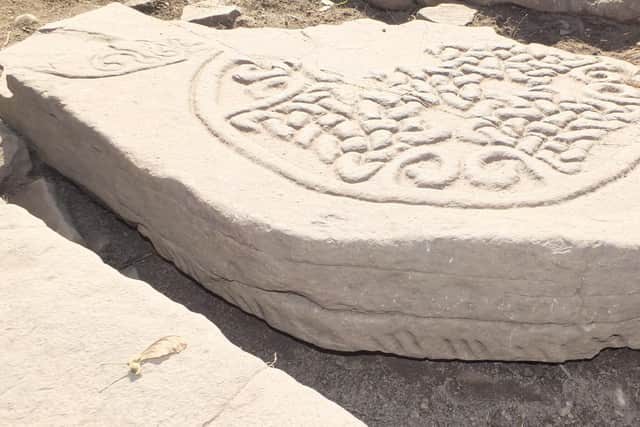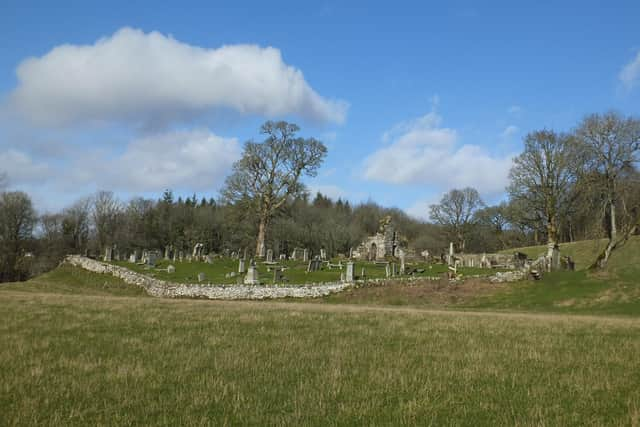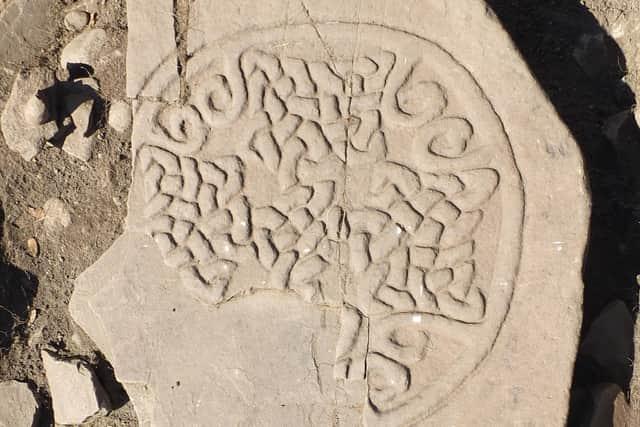Public rally to get 'extraordinary' Pictish style stone out of the ground
More than £5,000 has so far been raised by the public to retrieve the stone from the Old Kilmadock Cemetery near Doune, Perthshire, and get it on public display.
Following its excavation last year, the stone, which has been dated to between the 6th and 8th Century, has been re-buried for safety as discussions continue over its future. It was found by Dr Murray Cook, archaeologist at Stirling Council and members of the community- led Rescuers of Old Kilmadock (ROOK).
Advertisement
Hide AdAdvertisement
Hide AdPeter Herbert, spokesman for ROOK, said he believed people had donated to the fund given the special nature of the stone, which features a cross, engravings of animals in the Pictish style and examples of Ogham script, a form of Irish writing rarely found in Scotland. Around 30 examples of Ogham have been discovered across the country with the Old Kilmadock stone the first found in the Forth Valley.


He said: "It really is the most extraordinary find from a crucial period in Scottish history. Most of the Ogham is in Argyll or up in Shetland and Orkney. There are one or two examples down in Galloway. To have this stone found so far south, right in the middle of country, makes it a real outlier.
"Everyone wants to be able to read the script, but it remains back underground where it has been for the past 150 years, or for goodness knows how long.
“The stone means that almost certainly there was a monastic settlement at the site, either in or around where the cemetery is today. We need the serious archaeologists to work out that one.
"To establish if this was the site of a monastery would be a major achievement for us, if we could get there.”


Mr Herbert added the stone dated to around the period of the battle of Battle of Dun Nechtain in 685, when the Picts expelled the invading Northumbrians from the south and paved the way for the creation of Alba and, ultimately, Scotland.
Mr Herbert said more than £5,000 had been raised to cover the retrieval of the stone with the fundraiser to continue given the restoration is likely to cost somewhere in the region of £20,000 to £30,000.
He added: “The hope is to lift the stone out of the ground, take it to Edinburgh, allow it to dry out and get it carefully cleaned and all the plant material removed.”
Advertisement
Hide AdAdvertisement
Hide AdHowever, no firm plan of action has been reached with discussions ongoing with Historic Environment Scotland and the Treasure Trove Unit to determine what happens next.


Mr Herbert said: “It does seem that it has been agreed that the stone won’t just live in the ground. It’s a complicated business and the stone is in a very delicate state.
"It really does seem to me that the stone should be visible and accessible to visitors of all sorts.”
One option being discussed is for the stone to go on display at nearby Doune Castle, with a replica made for the graveyard.